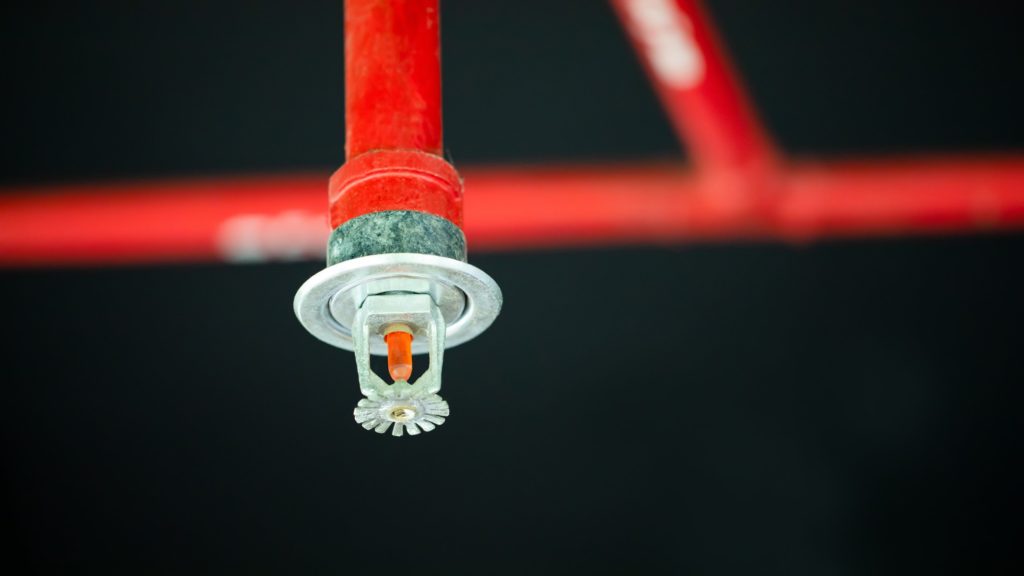Fire Sprinkler systems are one of the most useful tools for preventing and battling fire outbreaks. You may already have various fire extinguishers on the premises (did you know that there are different varieties of extinguisher – you can read about the colour coding here) but, according to statistics, there is a 65% reduction in the number of deaths and property damage that occur in fire outbreaks due to fire sprinkler systems.
For this reason, you might want to install one of these sprinkler systems in your workplace. Just in case you’re wondering how this life – saving systems work, here is a step by step guide on how these sprinklers prevent fire outbreaks.
Fire Sprinklers vs Smoke Detectors
I know you’ve heard about the importance of having a smoke detector and you’re also familiar with that pesky beeping noise it makes when it’s trying to get your attention. Funny enough, some people believe that a smoke detector is all they need to prevent a fire.
Smoke detectors do not put out fires! Their only job is to alert you when there is a potential fire outbreak. If it is hooked up to an alarm system, the fire department can also be alerted of the danger.
Smoke detectors work with fire sprinklers to protect life and property from damage. They work together but one is not indispensable to the other. To learn more, read this guide on the cost of a commercial fire sprinkler system.

How They Work
Step 1: Fire Sprinklers Detect Heat
Fire sprinklers are not triggered by smoke unlike what most people think. If this were the case, your sprinklers would go off anytime you make toast in the office kitchen.
Fire sprinklers are triggered by high heat. The temperature must be between 135- and 165-degrees Fahrenheit (57 to 74 Celsius).
Whenever a fire starts, the air above it begins to heat up at a very fast rate. This hot air continues to rise until it reaches the sprinkler head. When this happens, a chain reaction occurs.
Many sprinkler heads have a glass bulb filled with glycerin-based liquid. When the hot air comes in contact with this bulb, the liquid expands, shattering the glass case. This is what activates the sprinkler head.
Step 2: Fire Sprinklers Douse the Fire
Each sprinkler head is connected to a system of pipes that are hidden in the walls and ceiling of the building. These pipes are connected to a reliable water source that is close to the building.
When the sprinkler head has been activated, the valve leading to the pipe system opens and releases the pressurized water from the pipes. The water pushes out of the pipes, spraying in an arc downwards and sideways throughout the area.
This is what douses the flames and stops the fire from spreading any further.
Step 3: Fire Sprinklers Minimize Water Damage
Hollywood movies usually portray the operation of the fire sprinkler system wrongly. They make it look like all the sprinklers in the building are connected and activated at the same time.
If it worked that way, we would succeed in preventing fire damage but lose millions of dollars due to water damage. Fire sprinklers do not work that way.
Fire sprinkler heads work individually. Fires can even be extinguished with the help of only two sprinkler heads. The system is designed in such a way that only the areas affected by the fire are targeted.
In addition to this, fire sprinklers don’t use as much water like a fire hose and this prevents water damage. Installing a fire sprinkler system will save you more money and prevent less property damage than a visit from the local fire department.
Fire Sprinkler systems are indispensable, especially in the workplace. It is a good investment that will pay off for a long period. It doesn’t cost so much to install, and you get to protect your organization from the destructive consequences of a fire outbreak.

